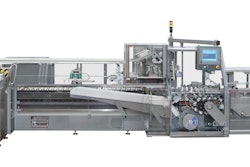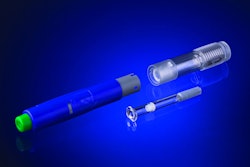This content was written and submitted by the supplier. It has only been modified to comply with this publication’s space and style.
Newly proposed changes to widely used pharmaceutical packaging standards will be the focus of a May 20–21, 2013, workshop co-sponsored by the U.S. Pharmacopeial Convention (USP) and the Product Quality Research Institute (PQRI). The USP standards that will be addressed are specifically relied upon by regulators and manufacturers for determining the barrier protection afforded to medicines by their packaging from outside moisture permeation.
“Moisture permeation through the packaging of medicinal products can affect the quality of the final product for the patient, and is therefore a critical issue in the area of pharmaceutical packaging,” said Dr. V. Srini Srinivasan, executive vice president and chief science officer of USP. “The ability to accurately assess the degree to which packaging shields a product from moisture is an important USP testing requirement for packaging systems. New changes to these standards are being proposed, and are expected to have high impact. At this workshop, we will seek input from stakeholders—manufacturers, packagers and repackagers, regulators and others—on new methods for measuring moisture permeation as well as related issues that may result in far-reaching changes to the standard in the near future.”
Through its United States Pharmacopeia (USP) and National Formulary (NF) compendia, USP provides standards for the functional properties of packaging systems used for solid oral dosage forms for pharmaceuticals and dietary supplements via monographs that directly (or through the General Notices) reference and apply General Chapter <671> Containers—Performance Testing for Plastic Containers. The general chapter is broadly used for more than compendial purposes as well, as it is referenced in the U.S. Food and Drug Administration’s (FDA) “Guidance for Industry on Container Closure Systems for Packaging Human Drugs and Biologics.”
Through the general chapter, USP provides tests to determine the moisture vapor transmission rate (also referred to as water vapor permeation rate) of plastic containers. The method currently in place was originally developed in the 1970s for use by pharmacists dispensing medicines, as opposed to manufacturers. Additionally, the method utilizes an older permeation test that is not very robust—which can lead to inconsistent results. Given these factors, USP proposed revisions to General Chapter <671> via Pharmacopeial Forum (PF) 39 (2) [March–April 2013]. PF is the vehicle through which USP accepts public comments on proposed new standards. The revision proposes a new method for measuring moisture vapor transmission rate that is more reproducible and may be better suited for modern applications. Much of the method development work that formed the basis for this revision was conducted by PQRI over the course of the past decade.
In addition to the new method, the USP-PQRI Workshop will consider a second principal issue of USP’s classification system for pharmaceutical packaging, which at present is based on the categories of “well-closed” and “tight” containers. Certain drug products require protection beyond “tight” and this is one of the reasons conducting an open discussion on the topic is necessary. Workshop sessions will include:
• Background and Introduction to Revision of USP <671>. A work history of PQRI and USP on moisture vapor transmission rate, summary of PQRI and ASTM International studies, overview of the new USP <671> method for determining barrier protection for packaging systems and improvements to packaging classification systems will all be addressed.
• Methodology, Data Analysis and Case Studies. Potential applications of the new method to determine barrier protection, the need for a new USP system for packaging classification and case studies from companies that have used the new method will be explored.
• Regulatory Issues and Next Steps. Current regulatory thinking from Dr. Donald N. Klein of FDA, desiccant preparation, calculations and filling, and moisture vapor transmission rate data analysis and reporting will be among the topics covered.
This workshop is intended for all stakeholders interested in furthering the science of maintaining packaging integrity for solid oral dosage forms. This includes professionals working in or with research and development, contract research organizations, contract manufacturing associations, contract packagers and repackagers, packaging component manufacturing, packaging component suppliers, regulatory affairs and quality assurance/quality control.
The workshop will be held at USP’s headquarters in Rockville, Md. Registration rates are $495 for industry and $395 for association/government/academia. Group discounts are also available. For more information and to register, visit http://uspgo.to/moisture-permeation.






















